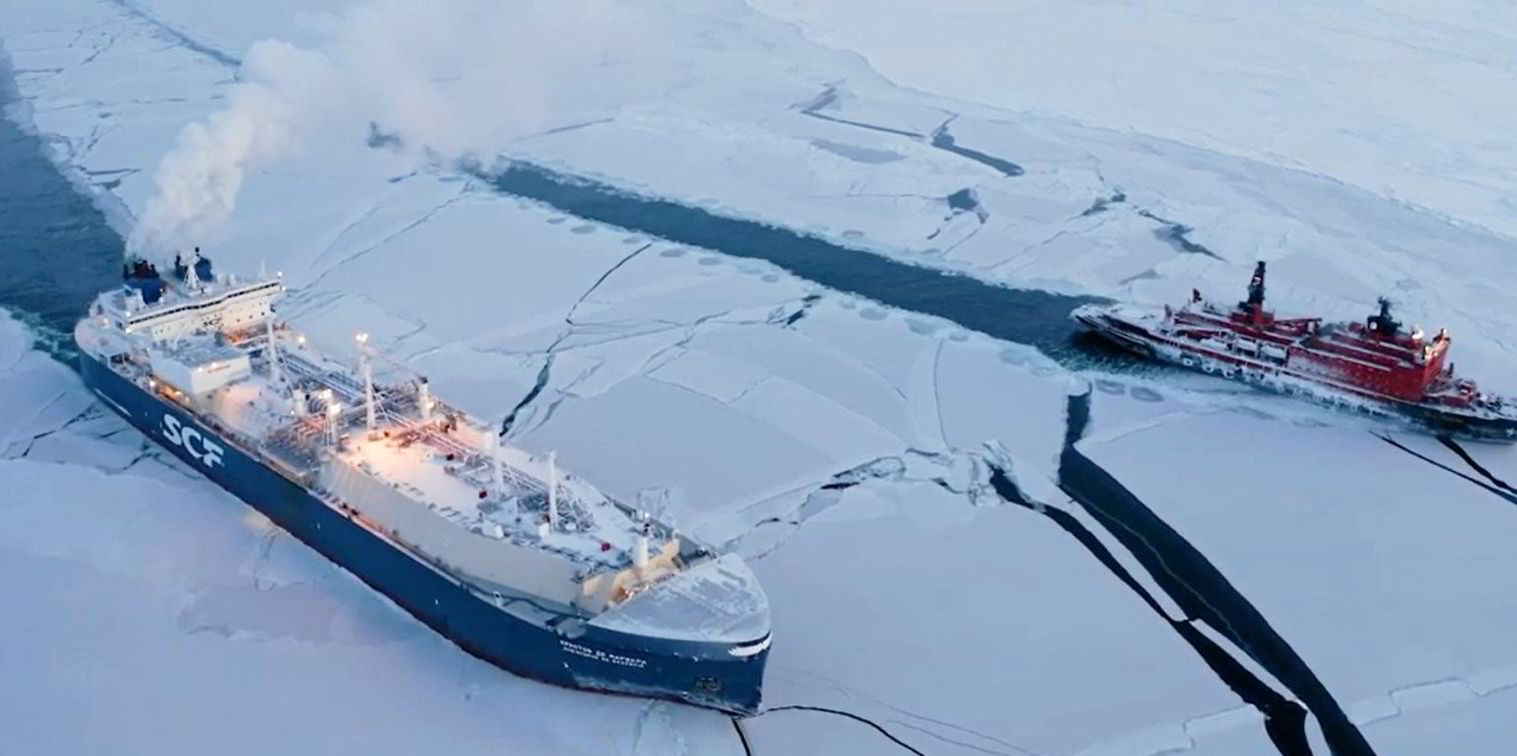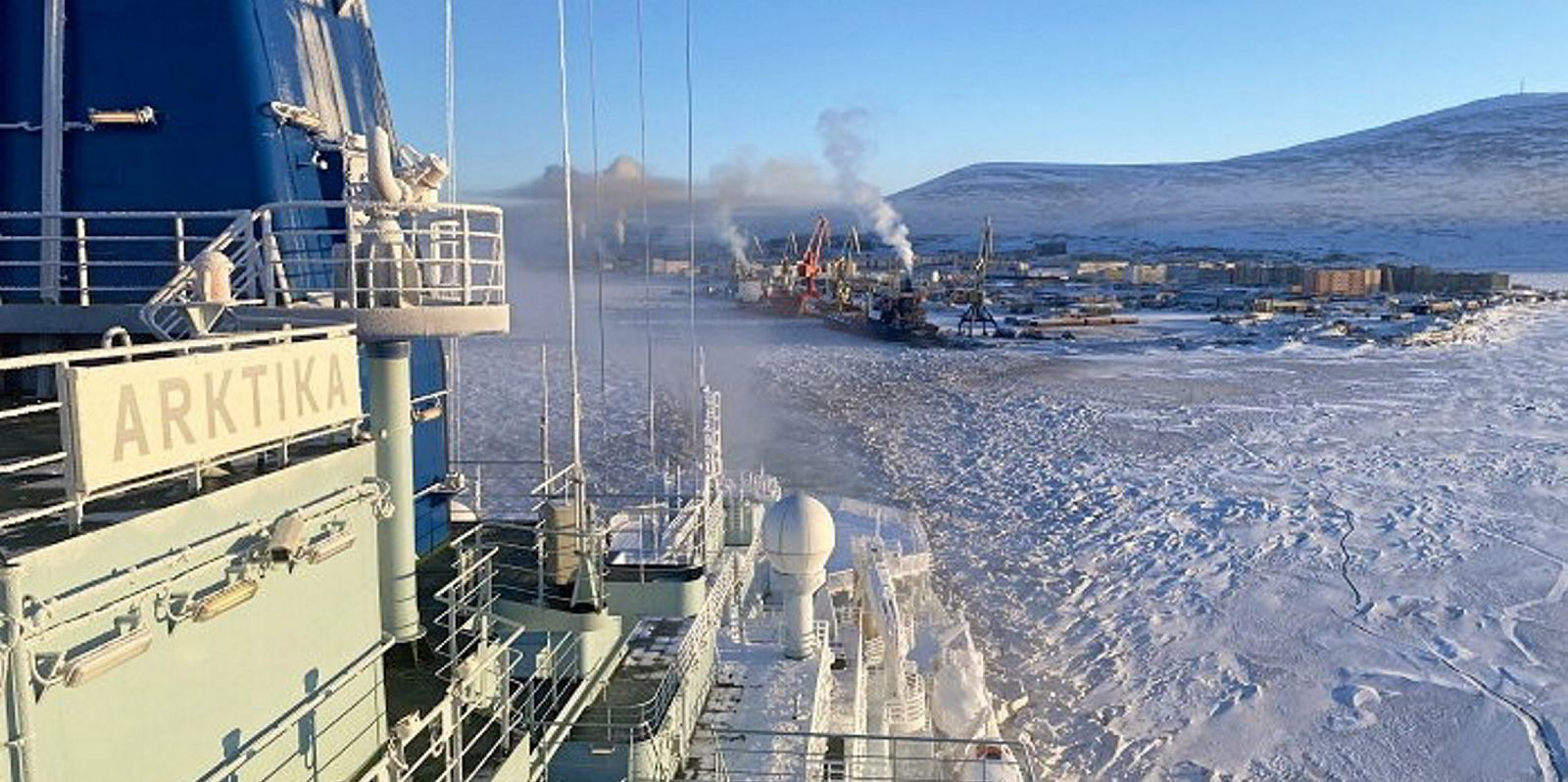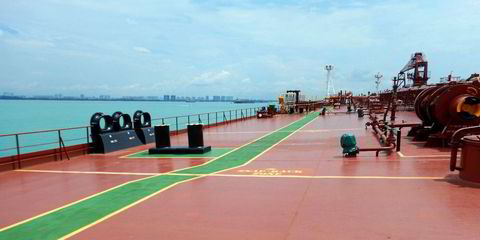Two aframax tankers hauling Russian oil via the Arctic ‘shortcut’ have arrived in China after an ice-delayed voyage that failed to save time compared to a longer route via the Suez Canal.
Kpler tracking data showed that the ice-class vessels — the 111,000-dwt NS Arctic (built 2009) and 114,000-dwt Primorsky Prospect (built 2010) — arrived this week in northern China after travelling via the rarely-used Northern Sea Route (NSR).
The Kremlin is seeking to exploit the NSR in the coming years to potentially cut several weeks from a voyage from Russia’s Baltic ports to its Asian customers — a route that has only increased in importance with the European Union’s ban on Russian oil imports.
But the logistical difficulties of travelling through the harsh Arctic environment were highlighted by the NS Arctic which took 46 days to travel from Primorsk to the Chinese port of Lianyungang — the same time the tanker took to a similar destination via the longer Mediterranean Europe and Indian Ocean route in late May.
The tankers — which had an ice breaker leading them through the ice during parts of the route — were on occasions travelling at 3-4 knots at points during the journey, probably because of the thickness of ice, said senior Gibson shipbroker analyst Svetlana Lobaciova. Shipping data had suggested they were due to arrive in China about two weeks earlier.
The 117,150-dwt SCF Baltica (built 2005) also arrived in Tianjin in eastern China on Wednesday after a 31-day voyage via the NSR with 785,000 barrels of crude. It travelled over a shorter distance after loading from a floating storage vessel near Murmansk.

The tankers were among the early season starters with likely better conditions for navigation in the coming weeks and months, said Lobaciova. The route opens up from July to September but Russian officials are plotting all-year sailing on the NSR from 2025.
Other tankers have followed this year with the Olympiysky Prospect, like the SCF Baltica managed by Sun Ship Management, the sanctioned Dubai-based technical manager of Sovcomflot, leaving Primorsk on 15 August heading for Tianjin for an estimated journey time of 32 days, according to data.
Small window
“The route will be more accessible in five or ten years but the current difficulties they are facing are quite challenging this early in the season,” said Lobaciova. “For the time being it will remain problematic with only a short window to do this.”
The NSR is attractive as it reduces bunker costs as well as journey times and is only likely to become more navigable with the current trajectory of global warming. While the need for an icebreaker escort raises costs, that can be shared with larger convoys in the future, said the analyst.
Russia is also planning to develop its Siberian oilfields and a new terminal at the Bukhta Sever port in Russia’s north, from where up to 2m barrels per day are due to be shipped from 2030, according to officials.
Authorities aim to increase cargo shipping volumes from 2019 of 31.5m tonnes to 80m tonnes by 2024 and double that by 2035, according to an investment portal for Russia’s Arctic.
Read more
- First laden Arc4 LNG carrier heads eastbound on Northern Sea Route
- Russian tankers pivot East as Moscow pushes Northern Sea Route
- Arctic set for summer surge of Russian crude tankers, say analysts
- Paolo d’Amico says West’s oil price cap is hurting Russia and could quell India’s appetite
- Russian oil tankers set rare course for Northern Sea Route in strategic shift





